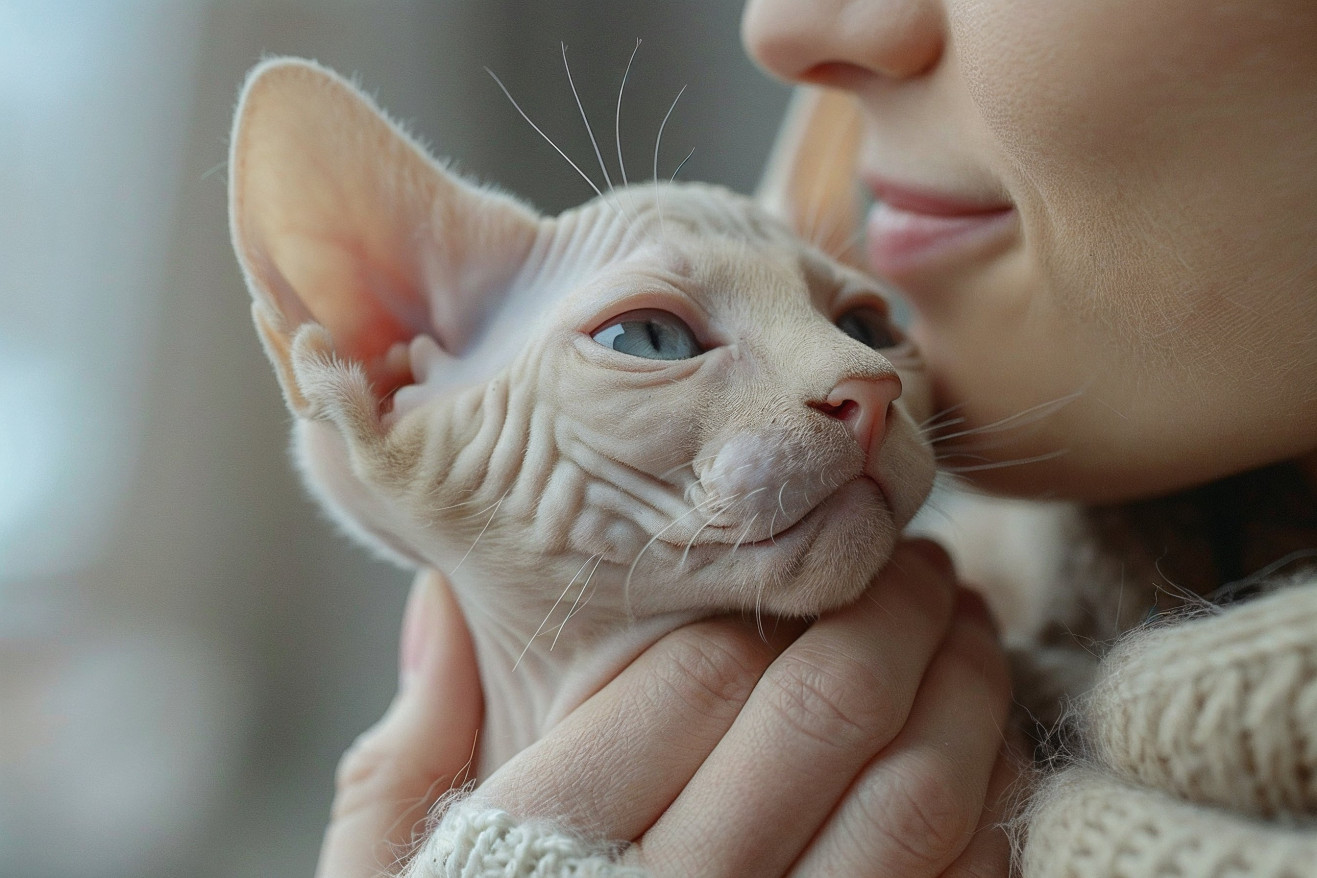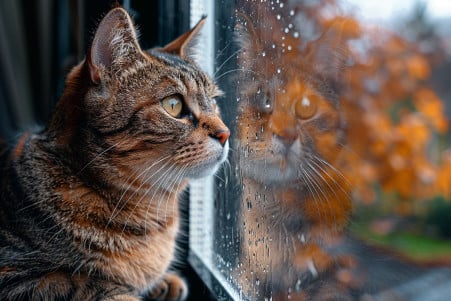Do Hairless Cats Actually Help People With Cat Allergies? Exploring the Truth
5 June 2024 • Updated 4 June 2024

Despite the popular belief that hairless cats like the Sphynx are hypoallergenic, the reality of their allergen-producing potential is more nuanced. Hairless cats still secrete the primary cat allergens, including the Fel d 1 protein, although the levels may be lower than those in cats with fur. However, their saliva, dander, and urine can still cause allergic symptoms in people who are sensitive to them. The right care and living conditions can help minimize exposure to these allergens.
To determine whether hairless cats can be considered hypoallergenic for people with cat allergies, we'll review research conducted by immunologists, allergists, and veterinarians. By examining controlled studies, surveys of cat owners, and recommendations from animal care professionals, we'll find out how much of a threat hairless cats and other hairless breeds pose in terms of allergens compared to their furry counterparts. This in-depth analysis will give you the information you need to make informed decisions about how to best manage any allergic symptoms you may experience around these one-of-a-kind pets.
Do hairless cats help people with cat allergies?
What We Know About Cat Allergens
The Fel d 1 protein is the major cat allergen and is responsible for causing allergies in more than 90% of people who are allergic to cats, according to research cited by PMC. While the levels of Fel d 1 can differ based on a cat's sex and whether or not they are neutered, all cats produce the allergen in some capacity.
That said, Fel d 1 isn't the only allergen that cats produce. In addition to Fel d 1, cats also produce other allergens in their dander (dead skin cells), saliva, and urine that can cause symptoms like sneezing, wheezing, itchy eyes, and skin rashes. As the American College of Allergy, Asthma & Immunology notes, the severity of a person's allergic reaction is based on their sensitivity and the amount of allergens they are exposed to.
Although some cats are marketed as "hypoallergenic," no cat is completely allergen-free. While some breeds, such as the Siberian, may have lower average levels of Fel d 1, research has shown that there is still a lot of variation within breeds. This means that it's important to focus on managing overall allergen exposure, a topic we'll delve into more in the sections on the Sphynx and other cats.
The Sphynx Cat: Dispelling Myths and Exploring Allergen Levels
Although Sphynx cats are often considered hypoallergenic due to their lack of fur, the truth is a bit more complicated. As explained in a Medium article, Sphynx cats still produce the Fel d 1 protein that is the primary cause of cat allergies, although they may produce less of it than other breeds.
In addition, Sphynx cats still shed dander, saliva, and skin oils, even though they don’t have fur, and these allergens can still cause allergic reactions in people who are sensitive to them. As noted in an infographic on hypoallergenic cat breeds, Sphynx cats require regular grooming and bathing to keep allergen levels low in their living environment.
While Sphynx cats may be a good option for some people with allergies, a study found that Sphynx cats are not completely hypoallergenic. As a result, people with allergies should still have themselves and their family members tested for allergies and sensitivities and monitor their reactions closely before bringing a Sphynx cat into their home. The next section will take a closer look at other cat breeds that may be better options for people with allergies.
Hypoallergenic Cat Breeds to Consider
There are many cat breeds that are often marketed as "hypoallergenic" for people with allergies. Some of the most commonly cited hypoallergenic breeds, according to The Spruce Pets, are the Siberian, Balinese, Oriental Shorthair, Russian Blue, and Sphynx.
These breeds either produce less of the Fel d 1 protein that causes most cat allergies and/or have coats that shed less dander, according to PetMD. For example, the Siberian has been shown in studies to lack the genetic coding to produce much Fel d 1, while the Balinese and Oriental Shorthair are known for their shorter, less-shedding coats, according to Trupanion.
That said, it's important to realize that even these "hypoallergenic" breeds can still produce allergens and that people's reactions to cats can vary widely. The Spruce Pets recommends allergy testing and close observation before bringing home any of these breeds. Working with professionals and doing plenty of homework is essential for people with allergies who are looking for a cat.
How to Cope With Cat Allergies
If you or a loved one has a cat allergy, it’s important to take steps to reduce exposure to cat allergens. WebMD notes that one of the most effective ways to reduce allergen levels in the home is to create an "allergen-free zone" in the bedroom by keeping cats out. Regular cleaning, including vacuuming with a HEPA filter and using air purifiers, can also help reduce dander and other allergens in the air.
In addition to reducing allergen levels in the home, proper grooming can help reduce the amount of allergens that cats produce. Petfinder explains that brushing and bathing cats can help reduce the amount of allergens they produce by limiting the amount of saliva, skin oils, and loose hair they shed. Dander-reducing wipes can be used to help reduce allergens in between baths.
To help manage symptoms, WebMD recommends over-the-counter antihistamines, decongestants, and nasal sprays. In more severe cases, prescription medications and immunotherapy may be recommended. Some natural remedies, such as nettle tea, quercetin, and antioxidants, have been shown to help in research studies, as noted by Petfinder. It’s best to talk to an allergist to get personalized recommendations for treatment.
Conclusion: Managing Cat Allergies
While the emotional rewards of having a cat can be great, people with cat allergies will need to consider the potential downsides before bringing a cat into their home. Even so-called "hypoallergenic" cats can cause allergic reactions in some people, so it's important to work with medical professionals and slowly introduce a cat to see how you react.
You may also need to manage your allergies on an ongoing basis with cleaning, grooming, and medication. It's also important to remember that you may need to make changes to your management plan as your body's reactions change. With the right management and flexibility, many people with cat allergies can enjoy the benefits of cat ownership. That said, it's important to make sure you're putting your health and well-being first.


